411 (F) Sqn- Squadron Inimicus Inimico ("Grizzly Bear")
History of the Squadron during World War II (Aircraft: Spitfire Mks. IIA,VB, IXB, IXE, XVI, XIV)
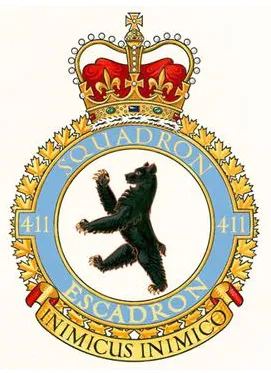
The squadron was the sixth of the RCAF's squadrons to be formed overseas in WWII. It was the fourth fighter squadron to be so formed. It was established at Digby, Lincolnshire, England  on June 16, 1941. It flew Spitfire aircraft in the defence of Great Britain, formed part of the Canadian Kenley Wing within No. 11 Group, Fighter Command, and after D-Day moved to France on June 19, 1944, in a fighter and ground support role. It then supported the Allied armies, moving through France, the Low Countries and Germany. It was one of four RCAF day fighter units retained in Germany as part of the British Air Forces of Occupation before being disbanded at Utersen, Germany
on June 16, 1941. It flew Spitfire aircraft in the defence of Great Britain, formed part of the Canadian Kenley Wing within No. 11 Group, Fighter Command, and after D-Day moved to France on June 19, 1944, in a fighter and ground support role. It then supported the Allied armies, moving through France, the Low Countries and Germany. It was one of four RCAF day fighter units retained in Germany as part of the British Air Forces of Occupation before being disbanded at Utersen, Germany  on March 21, 1946.
on March 21, 1946.
In the course of hostilities, the squadron flew 10,747 sorties for the loss of 48 aircraft and pilots, of whom 4 were killed, 4 wounded, 19 presumed dead. The squadron claimed 84 enemy aircraft destroyed, 3 probably destroyed and 44 damaged. On the ground, they claimed 367 motor vehicles and 26 locomotives. The squadron had 5 aces (shot down 5 or more enemy aircraft), of which Flight Lieutenant R.J. Audet DFC & Bar accounted for 5 enemy aircraft within 2 minutes in a single sortie on Dec 29 1944. He was killed on March 5, 1945, by which time his score had mounted to 11.5, including 2 Me 262 jets. Other aces were: Flight Lieutenant H.C. Trainor DFC & Bar, Flight Lieutenant J.J. Boyle DFC, Squadron Leader E.G. Lapp DFC, and Flying Officer M.G. Graham DFC. Overall, the squadron was awarded 1 DSO, 2 MBE, 2 Bars to DFC, 19 DFCs and 1 MiD. Battle Honours were: Defence of Britain 1941-44, English Channel and North Sea 1942-43, Fortress Europe 1941-44: Dieppe, France and Germany 1944-45: Normandy 1944, Arnhem, Rhine. Wikipedia, Kostenuk and Griffin
Maps for Movements of 411 Squadron 1941-46
 MAP 1: 411Squadron Movements 1941-44 (right-click on image to display enlarged in new tab) |
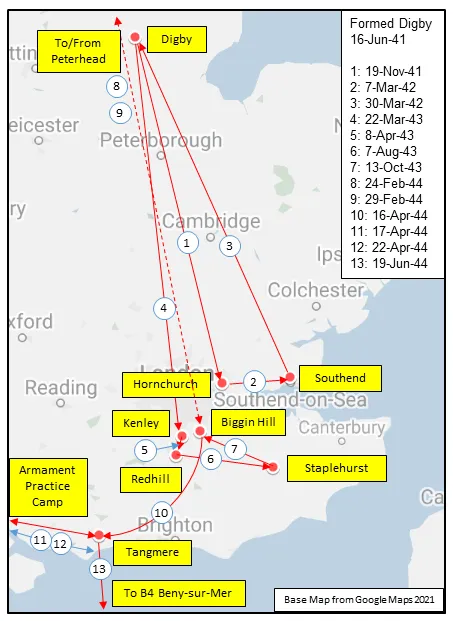 MAP 2: 411 Squadron Movements Detail of Map 1 |
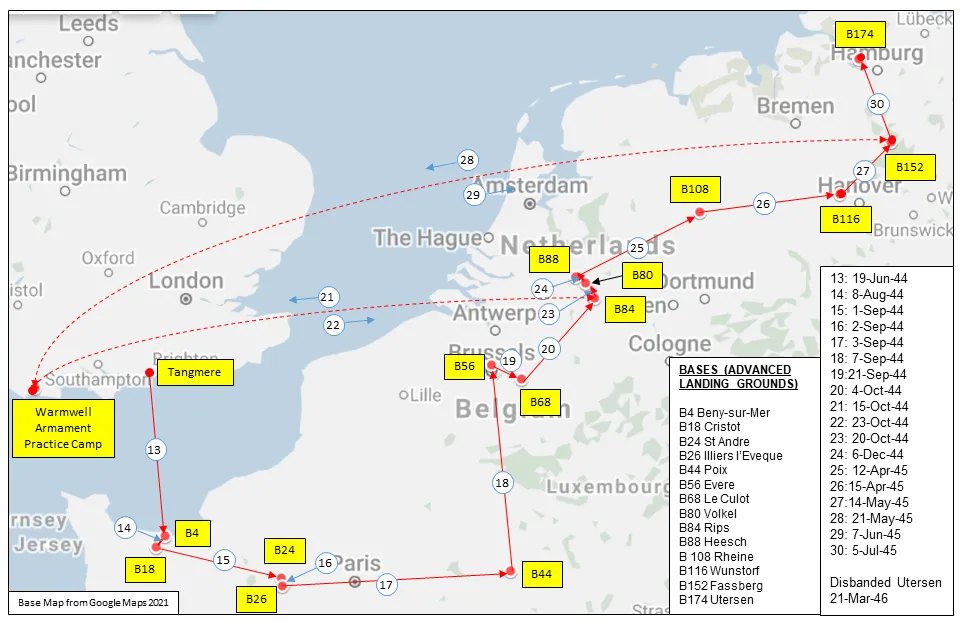 MAP 3: 411 Squadron Movements in Europe 1944-46 |
411 Squadron History Summary 1941-46
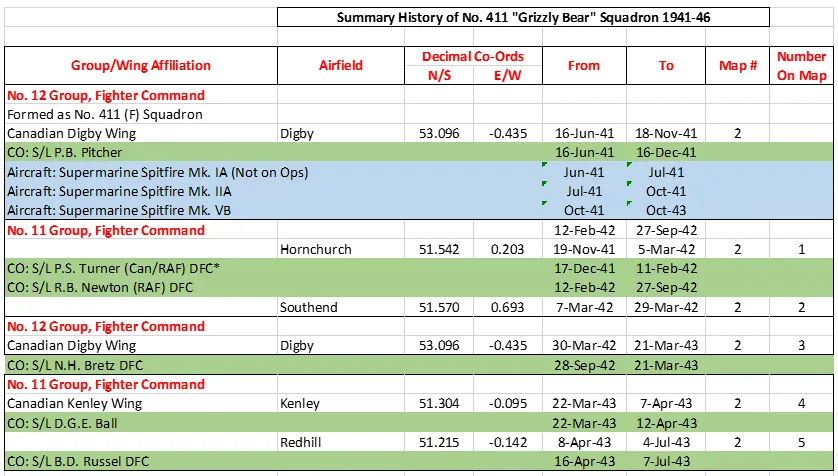
411 Squadron History Summary 1941-46 Page 2

411 Squadron History Summary 1941-46 Page 3
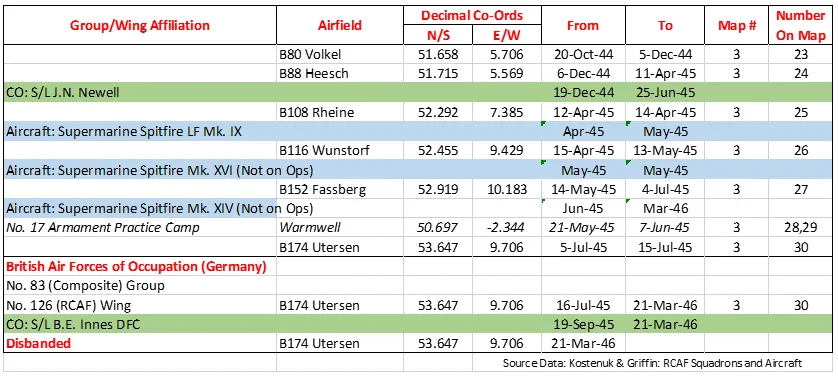
History of the Squadron Post-WWII (Aircraft: Harvard II, Chipmunk, Vampire III, Silver Star, Sabre 5, Expeditor, Otter, Kiowa)
411 Squadron was reformed as an auxiliary fighter squadron at RCAF Station Downsview Ontario  on 1 October 1950, and was known as the ‘County of York’ squadron. With North American Harvards and de Havilland Chipmunks as trainers the squadron operated the de Havilland Vampire III until 1956, then transitioned to the Canadair Sabre Mark V, with the Canadair Silver Star used as a trainer.
on 1 October 1950, and was known as the ‘County of York’ squadron. With North American Harvards and de Havilland Chipmunks as trainers the squadron operated the de Havilland Vampire III until 1956, then transitioned to the Canadair Sabre Mark V, with the Canadair Silver Star used as a trainer.
In October 1958, 411 was moved from Air Defence Command to Air Transport Command, and became a light transport squadron flying the Beech Expeditor C-45. The squadron adopted a Search and Rescue (SAR) role in spring of 1960 with the acquisition of the DHC-3 Otter. The Expeditor was retired in 1966.
On 1 February 1968 the squadron was integrated into the Canadian Armed Forces as No. 411 “County of York†Air Reserve Squadron. In 1969, 411 Squadron was transferred from Air Transport Command to 10 Tactical Air Group, and the squadron's primary role changed to the support of army operations. It continued to hold a secondary SAR role, and to do mapping surveys and sovereignty flights in the Canadian arctic. In 1981, the Otter was retired and the squadron transitioned to the CH-136 Kiowa (OH-58) helicopter, which it operated in a reconnaissance and tactical support role. The squadron finally disbanded on 1 Jan 1998.
 RCAF Station Downsview
RCAF Station Downsview



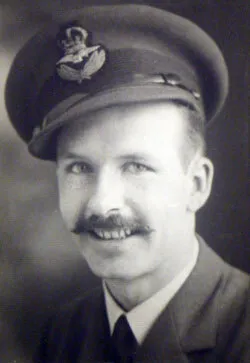

 Canadian Virtual War Memorial
Canadian Virtual War Memorial Commonwealth War Graves Commission
Commonwealth War Graves Commission Find-A-Grave.com
Find-A-Grave.com Library and Archives Canada Service Files (may not exist)
Library and Archives Canada Service Files (may not exist)